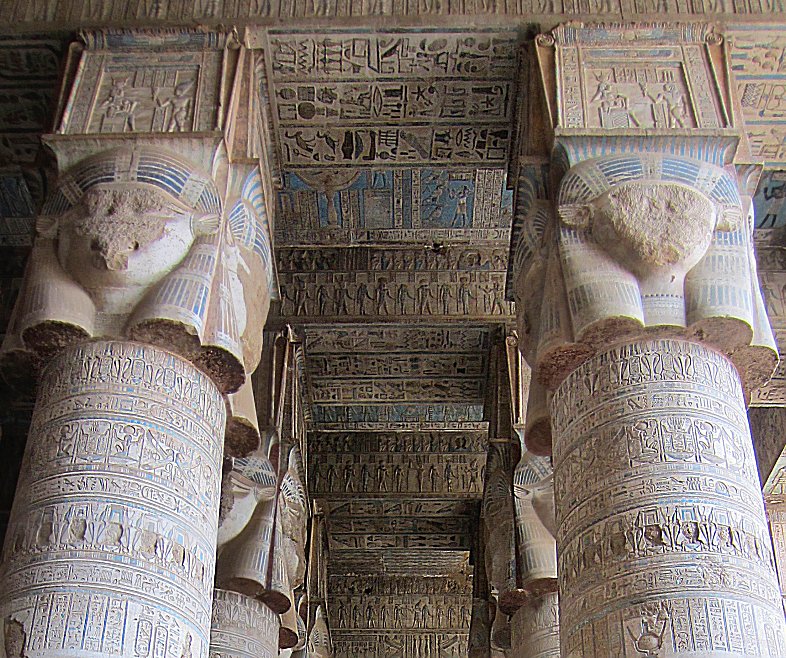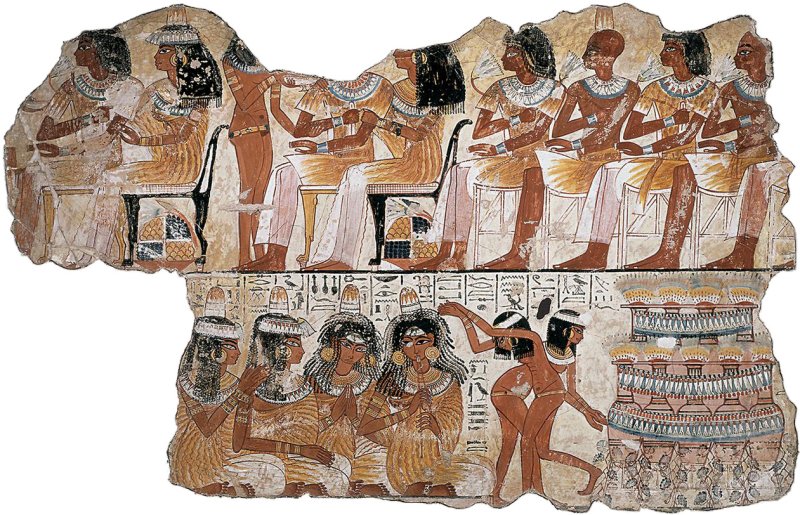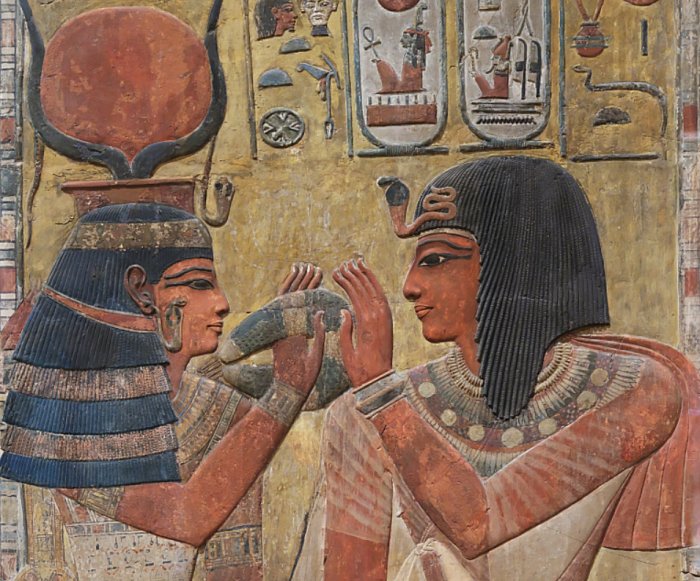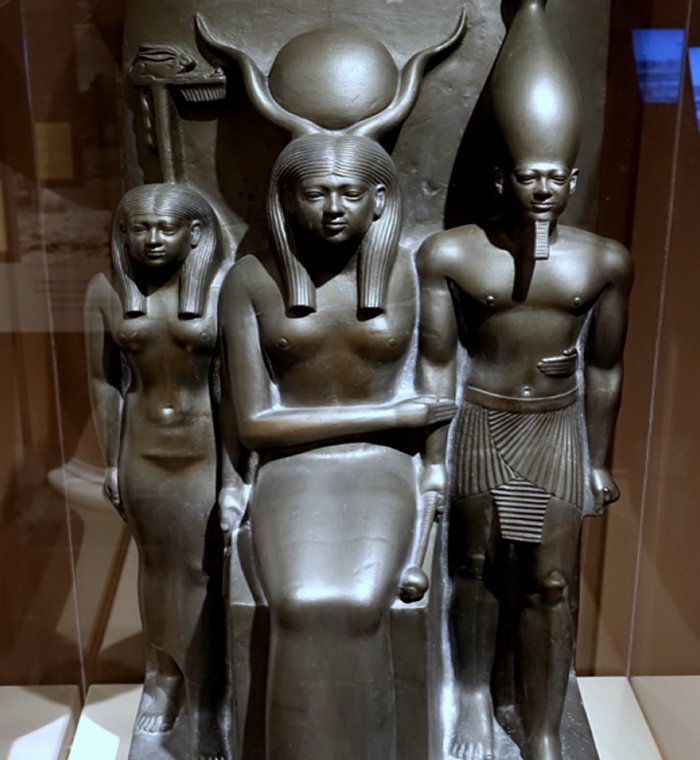Hathor – One Of Ancient Egypt’s Greatest Female Deities
A. Sutherland - AncientPages.com - One of the largest and most complex pantheons of gods belongs to Egypt. In this pantheon, Hathor is a goddess of heaven and mother, depicted with a cow horn (or cow's head) and a sun disk on her head.
Hathor passing the Ankh to Seti. Image credit: BasPhoto - Adobe Stock
No doubt, one of ancient Egypt's most outstanding female deities is Hathor. She is believed to have been worshiped already during the pre-Dynastic Period, but most evidence of her importance can be found in records of later dynasties.
Occasionally, she is mentioned in the Pyramid Texts and much more often in the Coffin Texts of the late third millennium BC (the "Eye of Horus), and later, in other religious, literary works.
In the north, in the Nile Delta, she was also the "Eye, taking the form of the guardian cobra goddess Wadjet, whose symbol was placed on the forehead of pharaohs.
Most of the goddess' common forms were a cow, a lioness, a snake, a sycamore tree, or papyrus, which "was the home of Hathor, the sky, and mother goddess as she was a goddess. " 1
In her cow form, Hathor was a life-giving goddess closely related to fertility. She was also seen as the symbolic mother of each pharaoh. However, it was not the only link between her and the pharaoh. Hathor was Horus' wife, and each pharaoh was believed to be the earthly embodiment of Horus.
Hypostyle Hall of the Temple of Hathor at Dendera, first century AD. Image credit: A. Parrot - Public Domain
Because of this link, each pharaoh had a right to be described as "the son of Hathor."
She was known as the wife or mother of Horus. Her name was in the hieroglyphic sign representing a walled building or courtyard. It meant "the house of Horus," referring to the goddess's mythological role as a mother of the ancient falcon god.
Hathor - A Healer And A Protector
Women in ancient Egypt believed in her protection and worshiped her with Horus and their son Ihy at Dendera and many other cultic places. She was "believed to dwell in the mountain chain, which ran from Deir el Bahari to Deir el Medineh. Shrines dedicated to her were built over the years at each end of the range, north and south." 1
Many titles, attributes, identities, and associations attested to Hathor's importance.
Worshipers also considered her healer and protector because, in one myth is told she restored the sight of Horus after Seth had wounded his Eye. She was known to purify sick people and even cure them with the water of the Nile River.
She protected the homes, blessed couples with fertility, watched over pregnant women and children, and spread joy in the homes.
Banquet scene from the tomb chapel of Nebamun, 14th century BC. Its imagery of music and dancing alludes to Hathor. Image source
Goddess Of Joy, Celebration, Love, Pleasure, And Dance
Her favorite musical instrument was the sistrum (kind of rattle). She tried to drive away evil spirits and bad influences by shaking them. One story dated to the time of Hathor's worship at Dendera says that people believed that she and Horus had a son called Ihy, a god in ancient Egyptian mythology who symbolizes the musical ecstasy of playing the sistrum. His name means "sistrum player."
The goddess's sensuality influenced even such great divinities as Ra. Legend says once Ra was depressed, and Hathor probably wanted to boost his mood, she danced naked until he suddenly smiled. On this particular occasion, Hathor's priests quickly moved her statue from the shrine to the temple's roof, so she once again was symbolically much closer to Ra, and he was now smiling.
Hathor’s “priests and priestesses were accomplished musicians and actors. They would create rituals that were as much art as ritual. People would go to the temple of Hathor to have dreams explained, or when they needed the spark of inspiration.
Hathor welcoming Seti I into the afterlife, 13th century BC. Image credit: Shonagon - CC0
Egyptians looked at Hathor much the same as Greeks looked at their nine Muses. Hathor was so popular that she had more celebrations than any other Egyptian deity. With her association with pleasure and joy, is it any wonder?
She also had more children named for her than any other deity. Naming a child for a particular god or goddess was to give that child a natural connection to that deity. To give a child, male or female, a name that included the name of Hathor, was to give that child a natural grace and beauty.
The name bestowed all the gifts of Hathor on that child, including fertility, abundance, grace, beauty, and compassion.” 2
Hathor - As A Destructive Lioness Sekhmet
She also probably personified the nighttime sky or the Milky Way. However, her connection with the sky is apparent. It is written in Pyramid Texts 546, "my kilt which is on me is Hathor, my plume is a falcon's plume, and I will ascend to the sky," which is a reference to Horus and Hathor as sky deities.
Hathor's name means "Temple of Horus" (Huwt-Hor), and as such, even more demonstrates that she is "Lady of the Sky" while Horus was entitled "Lord of the Sky."
Copy of a statue of Hathor (center) with a goddess personifying the Fifteenth Nome of Upper Egypt (left) and the Fourth Dynasty king Menkaure (right); 26th century BC. Image credit: Daderot - Public Domain
But there is also a clear association of Hathor with the sun god Ra. Seeing the people's bad attitude toward him, Ra punished them by sending his "Eye of Ra" (the goddess Hathor), who punished humans, so they began to drown in their blood. Ra commanded his Eye Hathor to turn into Sekhmet, the lioness goddess, and ordered her to teach the humans a lesson. Terrified by the massacre, Ra saved the survivors of this massacre the next day by getting Hathor drunk.
As the ancient Egyptian culture lasted for several thousand years, its people often merged old beliefs with new ones.
Also, one deity was often associated with another. So, it was also the case with Hathor. However, her relationship with other gods is rather complicated. In the beliefs of the ancient Egyptians, she is a mother, daughter, and wife with several personifications and identities.
Sometimes she is lovely, sweet, and sensual, and on other occasions, she surprises us as a goddess of destruction, by, for example, acting in disguise of another deity.
As a funerary goddess, Hathor was identified with the underworld, especially at Thebes, the capital of Egypt, for long periods during the Middle Kingdom and New Kingdom eras, with the cemetery on the west bank of the Nile River. This area was under Hathor - 'The Lady of the West's protection, depicted as a cow (associated with fertility) leaving the arid desert. The dying people believed that once in the afterlife, they would be protected by her.
The ancient Greeks are said to have identified their love goddess, Aphrodite, with Hathor, and in the Phoenician city of Byblos, she was revered as the "Lady of Byblos."
Her fame reached far beyond Egypt's borders.
Written by – A. Sutherland - AncientPages.com Senior Staff Writer
Updated on March 1, 2023
Copyright © AncientPages.com All rights reserved. This material may not be published, broadcast, rewritten or redistributed in whole or part without the express written permission of AncientPages.com
Expand for referencesReferences:
- Wilkinson, Alix. "Symbolism and Design in Ancient Egyptian Gardens." Garden History22, no. 1 (1994): 1-17.
- Page J. Biles K. Invoking The Egyptian Gods
Alison Roberts, Hathor Rising: The Power of the Goddess in Ancient Egypt
Leeming, D. The Oxford Companion to World Mythology
More From Ancient Pages
-
 On This Day In History: Chaldean Account Of The Deluge Translated And Presented For The First Time – On Dec 3, 1872
News | Dec 3, 2016
On This Day In History: Chaldean Account Of The Deluge Translated And Presented For The First Time – On Dec 3, 1872
News | Dec 3, 2016 -
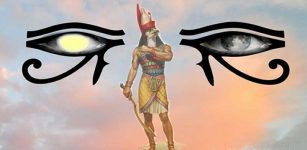 Horus – One Of The Most Important Ancient Egyptian Gods And Symbol Of Rulership and Justice
Egyptian Mythology | Jun 26, 2018
Horus – One Of The Most Important Ancient Egyptian Gods And Symbol Of Rulership and Justice
Egyptian Mythology | Jun 26, 2018 -
 Mystery Of The Lost Cahuenga Pass Treasure: Baffling Unexpected Deaths Caused By A Curse Or Natural Causes?
Featured Stories | Nov 2, 2018
Mystery Of The Lost Cahuenga Pass Treasure: Baffling Unexpected Deaths Caused By A Curse Or Natural Causes?
Featured Stories | Nov 2, 2018 -
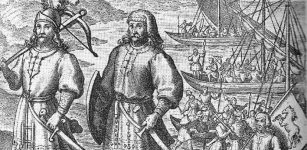 Hengist And Horsa: Legendary Anglo-Saxon Warrior Brothers And Leaders Of First Settlers In Britain
Featured Stories | May 28, 2016
Hengist And Horsa: Legendary Anglo-Saxon Warrior Brothers And Leaders Of First Settlers In Britain
Featured Stories | May 28, 2016 -
 Sobek: A 2,500-Year-Old Mummified Nile Crocodile – On Display At The British Museum
Archaeology | Dec 9, 2015
Sobek: A 2,500-Year-Old Mummified Nile Crocodile – On Display At The British Museum
Archaeology | Dec 9, 2015 -
 DNA Study Sheds Light On The Mysterious Picts Of Scotland
DNA | Jul 7, 2023
DNA Study Sheds Light On The Mysterious Picts Of Scotland
DNA | Jul 7, 2023 -
 Lost City Of Alexander The Great Found After 2,000 Years In Iraq
Archaeology | Oct 1, 2017
Lost City Of Alexander The Great Found After 2,000 Years In Iraq
Archaeology | Oct 1, 2017 -
 The Enigma Of The ‘Ancient Ones’, The Anasazi Cliff-Dwellers Of The Southwestern United States
Ancient Mysteries | Apr 9, 2017
The Enigma Of The ‘Ancient Ones’, The Anasazi Cliff-Dwellers Of The Southwestern United States
Ancient Mysteries | Apr 9, 2017 -
 Extraordinary Find: The Oldest Neanderthal DNA Of Central-Eastern Europe
DNA | Sep 10, 2020
Extraordinary Find: The Oldest Neanderthal DNA Of Central-Eastern Europe
DNA | Sep 10, 2020 -
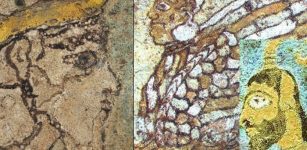 2,000-Year-Old Smuggled Glazed Bricks Sent Back To Iran By Switzerland
Artifacts | Dec 29, 2020
2,000-Year-Old Smuggled Glazed Bricks Sent Back To Iran By Switzerland
Artifacts | Dec 29, 2020 -
 Peopling the Americas: Not “Out of Japan” – Popular Theory Debunked
Archaeology | Oct 13, 2021
Peopling the Americas: Not “Out of Japan” – Popular Theory Debunked
Archaeology | Oct 13, 2021 -
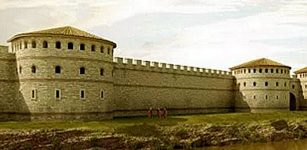 Huge Ancient Roman Kovachevsko Kale Fortress And Discovery Of A Horreum In Bulgaria
Civilizations | Dec 15, 2015
Huge Ancient Roman Kovachevsko Kale Fortress And Discovery Of A Horreum In Bulgaria
Civilizations | Dec 15, 2015 -
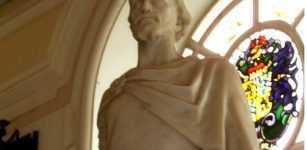 Owain Glyndwr: Famous Medieval Welsh Warrior Prince And Symbol Of Independence
Featured Stories | Jun 20, 2018
Owain Glyndwr: Famous Medieval Welsh Warrior Prince And Symbol Of Independence
Featured Stories | Jun 20, 2018 -
 Yakhchals: Ingenious Ancient ‘Refrigerators’ Could Store Ice In The Hot Desert
Ancient Technology | Sep 15, 2018
Yakhchals: Ingenious Ancient ‘Refrigerators’ Could Store Ice In The Hot Desert
Ancient Technology | Sep 15, 2018 -
 On This Day In History: Johannes Kepler ‘Father Of Modern Astronomy’ Was Born – On Dec 27, 1571
News | Dec 27, 2016
On This Day In History: Johannes Kepler ‘Father Of Modern Astronomy’ Was Born – On Dec 27, 1571
News | Dec 27, 2016 -
 Mysterious Hakkari Stelae: Were They Carved By Inhabitants Of Ancient Kingdom Of Hubushkia?
Artifacts | Nov 15, 2018
Mysterious Hakkari Stelae: Were They Carved By Inhabitants Of Ancient Kingdom Of Hubushkia?
Artifacts | Nov 15, 2018 -
 Final Journey Of Ötzi Iceman: More Clues Found In Frozen Moss
Archaeology | Nov 1, 2019
Final Journey Of Ötzi Iceman: More Clues Found In Frozen Moss
Archaeology | Nov 1, 2019 -
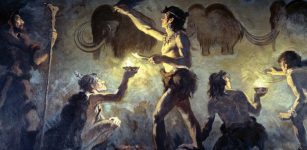 First Carbon-Based Paleolithic Paintings Found In Font-De-Gaume Cave, France Could Be 19,000 Years Old
Archaeology | Dec 29, 2023
First Carbon-Based Paleolithic Paintings Found In Font-De-Gaume Cave, France Could Be 19,000 Years Old
Archaeology | Dec 29, 2023 -
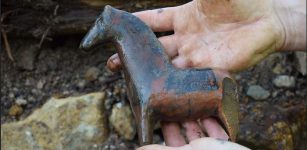 World’s Oldest Dala Horse Discovered In Sweden
Archaeology | Jul 18, 2020
World’s Oldest Dala Horse Discovered In Sweden
Archaeology | Jul 18, 2020 -
 Height Differences Among Neolithic People Was Caused By Environmental Stress Not Genetics
DNA | Dec 13, 2023
Height Differences Among Neolithic People Was Caused By Environmental Stress Not Genetics
DNA | Dec 13, 2023


